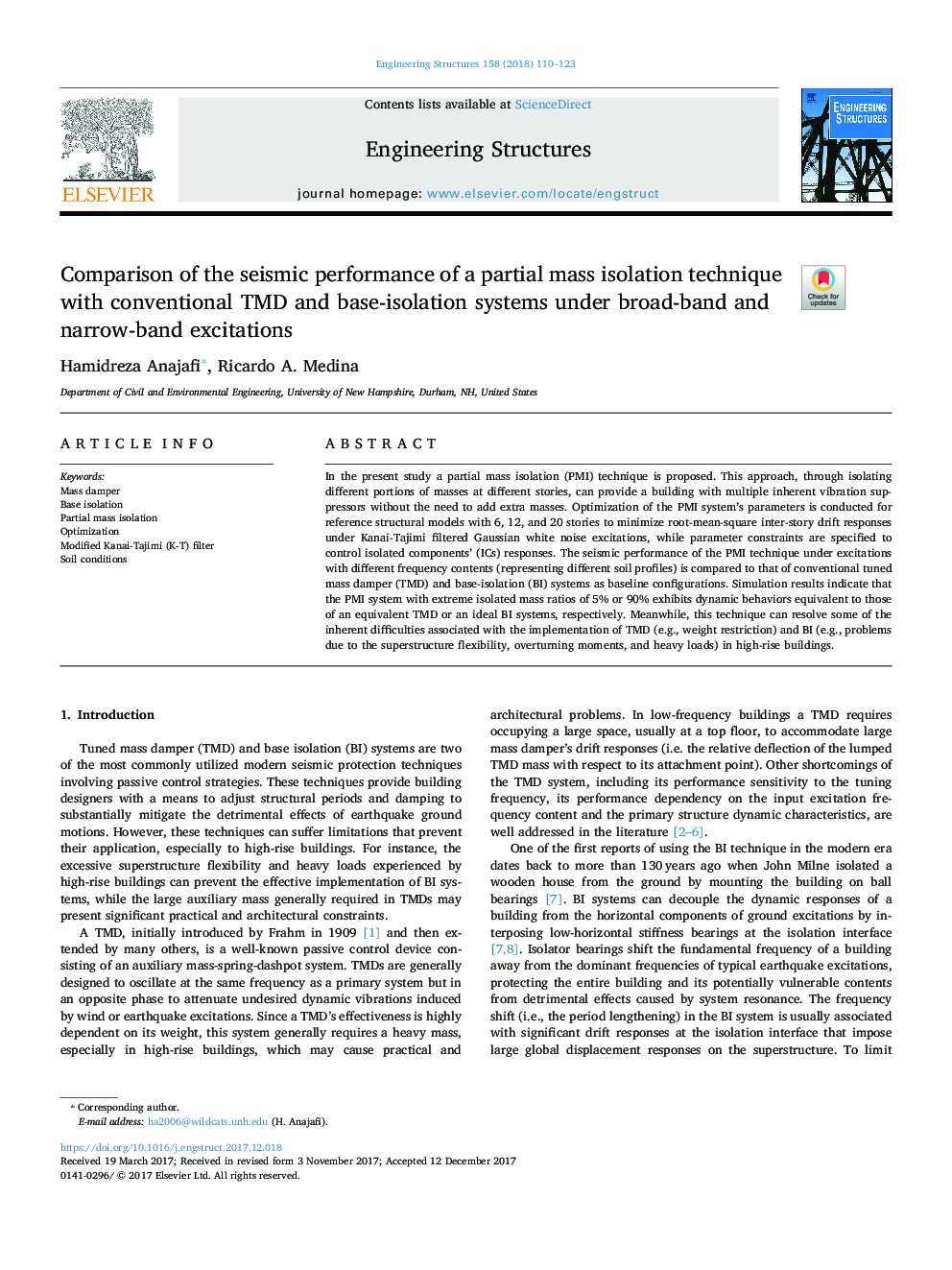| Article ID | Journal | Published Year | Pages | File Type |
|---|---|---|---|---|
| 6738647 | Engineering Structures | 2018 | 14 Pages |
Abstract
In the present study a partial mass isolation (PMI) technique is proposed. This approach, through isolating different portions of masses at different stories, can provide a building with multiple inherent vibration suppressors without the need to add extra masses. Optimization of the PMI system's parameters is conducted for reference structural models with 6, 12, and 20 stories to minimize root-mean-square inter-story drift responses under Kanai-Tajimi filtered Gaussian white noise excitations, while parameter constraints are specified to control isolated components' (ICs) responses. The seismic performance of the PMI technique under excitations with different frequency contents (representing different soil profiles) is compared to that of conventional tuned mass damper (TMD) and base-isolation (BI) systems as baseline configurations. Simulation results indicate that the PMI system with extreme isolated mass ratios of 5% or 90% exhibits dynamic behaviors equivalent to those of an equivalent TMD or an ideal BI systems, respectively. Meanwhile, this technique can resolve some of the inherent difficulties associated with the implementation of TMD (e.g., weight restriction) and BI (e.g., problems due to the superstructure flexibility, overturning moments, and heavy loads) in high-rise buildings.
Related Topics
Physical Sciences and Engineering
Earth and Planetary Sciences
Geotechnical Engineering and Engineering Geology
Authors
Hamidreza Anajafi, Ricardo A. Medina,
